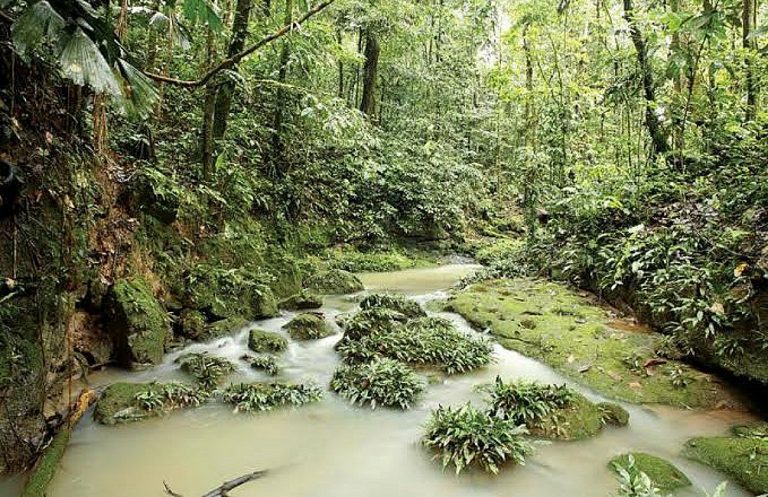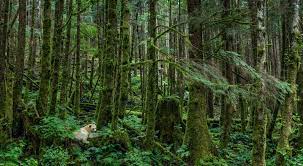10 Largest Forest In The World With Pictures

A forest is a diverse ecosystem characterized by a dense grouping of trees, shrubs, and vegetation, covering a significant land area. It plays a vital role in maintaining ecological balance, serving as a habitat for various wildlife species, while also acting as a carbon sink, absorbing and storing carbon dioxide from the atmosphere.
Forests provide numerous environmental benefits, including oxygen production, water purification, and soil stabilization. They are valuable resources for humans, supplying timber, non-timber forest products, and recreational opportunities. Forests vary in type, from tropical rainforests teeming with biodiversity to temperate forests and arid woodlands.
The largest forest on Earth is the Amazon Rainforest, spanning approximately 5.5 million square kilometers across South America, primarily in Brazil, but also extending into Peru, Colombia, and several other countries. This diverse ecosystem is home to an estimated 390 billion individual trees, comprising over 16,000 species.
The Amazon Rainforest plays a vital role in global climate regulation, as it absorbs vast amounts of carbon dioxide and releases oxygen, earning it the nickname the lungs of the Earth. It hosts an extraordinary array of biodiversity, including jaguars, sloths, and countless insect species. Sadly, this invaluable habitat faces severe threats from deforestation, primarily driven by agriculture and logging, endangering not only the forest itself but also the planet's ecological balance and indigenous communities that call it home. Conservation efforts are crucial to safeguard this irreplaceable natural wonder.
Biggest Forests In The World: Top 10 Largest
- Amazon Rainforest, South America
- Taiga Forest, Russia and Canada
- Congo Basin, Africa
- Daintree Rainforest, Australia
- Valdivian Temperate
- Rainforest, Chile
- Tongass National Forest
- Sundarbans Mangrove Forest,
- Bangladesh and India
- Borneo Rainforest, Southeast Asia
- Great Bear Rainforest, Canada
- Black Forest, Germany
1. Amazon Rainforest (South America)

The Amazon Rainforest is the largest tropical rainforest in the world, spanning over 5.5 million square kilometers across South America. It's home to a staggering biodiversity, including countless plant and animal species, making it vital for global climate regulation.
2. Congo Basin (Africa)

READ ALSO » Top 10 Most Handsome Black Men In The World With Pictures
The Congo Basin in Africa is the world's second-largest tropical rainforest, covering approximately 3.7 million square kilometers. It plays a critical role in carbon storage and is home to various endangered species.
3. Boreal Forest (Northern Hemisphere)

The Boreal Forest, also known as the Taiga, is the largest terrestrial biome, stretching across Canada, Russia, and parts of Scandinavia. It's characterized by coniferous trees like spruce and pine and has a crucial role in regulating the Earth's climate.
4. Sundarbans (India and Bangladesh)
The Sundarbans is the largest mangrove forest globally, covering around 10,000 square kilometers. It's famous for its Bengal tigers and unique mangrove ecosystem, which is susceptible to rising sea levels.
5. Tongass National Forest (United States)

Located in Alaska, the Tongass National Forest is the largest national forest in the U.S., spanning over 26,000 square kilometers. It's a significant carbon sink and contains old-growth temperate rainforests.
6. Valdivian Temperate Rainforest (Chile and Argentina)

This temperate rainforest stretches across southern Chile and Argentina, covering approximately 248,100 square kilometers. It's known for its lush greenery and high biodiversity.
7. Great Bear Rainforest (Canada)

Situated along the central coast of British Columbia, the Great Bear Rainforest spans over 6.4 million hectares. It's one of the world's largest temperate rainforests and houses various species, including the rare white Kermode bear, or spirit bear.
8. Daintree Rainforest (Australia)

The Daintree Rainforest, located in Queensland, Australia, is the largest tropical rainforest in the country, covering around 1,200 square kilometers. It's famous for its ancient plant species and unique wildlife.
9. Kinabalu Park (Malaysia)

READ ALSO » 5 Best Places To Take Pictures In New York
Kinabalu Park in Malaysia covers approximately 754 square kilometers and is renowned for its stunning biodiversity and being home to Mount Kinabalu, Southeast Asia's highest peak.
10. Humboldt Redwoods State Park (United States)
Located in California, this park contains some of the world's tallest and oldest trees, including the famous Redwoods. It spans around 214 square kilometers and is a testament to the importance of preserving ancient forests.
In conclusion, these 10 forests represent a fraction of the Earth's vital ecosystems. They play critical roles in carbon sequestration, maintaining biodiversity, and regulating our planet's climate. Protecting and preserving these natural wonders is essential for the well-being of the Earth and future generations.
